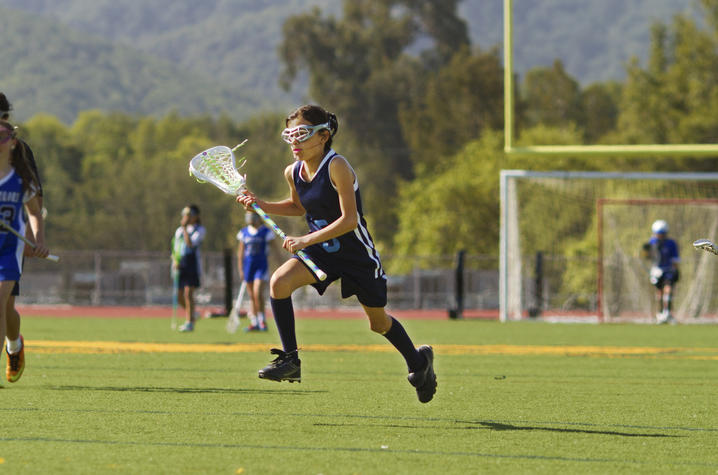As fall sports gear up, keep your athlete’s eye safety in mind

The University of Kentucky Public Relations and Strategic Communications Office provides a weekly health column available for use and reprint by news media. This week’s column is by John M. Franklin, M.D., director of pediatric ophthalmology and adult strabismus at UK Advanced Eye Care.
LEXINGTON, Ky. (Aug. 20, 2025) – With the return to school, fall sports season is just around the corner and it’s important to keep your child or player’s eye safety in mind if they’re hitting the field or court.
Common sports-related eye injuries among children
The most common sports-related eye injuries are corneal abrasions and orbit fractures. A corneal abrasion is when the top layer of the cornea is scraped off, usually from a fingernail or other semi-sharp object. An orbit fracture is a broken bone somewhere around the eye (the orbit is commonly called the eye socket).
UK HealthCare Pediatric Ophthalmology sees several of these injuries every year, ranging from very mild injuries where no treatment is needed to severe injuries requiring several surgeries to repair.
Long-term effects of eye injuries incurred during youth sports
Long-term effects can be highly variable. Sometimes there are no long-term effects. Occasionally, a corneal abrasion will result in recurrent erosions, where even the smallest event (like rubbing your eyelid) can loosen the top layer of the cornea and result in a painful abrasion nearly identical to the original injury. If an injury causes inflammation inside the eye, there can be scarring that leads to several problems, like abnormal pupil shape or even glaucoma.
Eye injury from sports can cause a cataract that requires surgery to remove. UK HealthCare treats pediatric cataract surgeries every year that are caused by injuries experienced during sports events.
Orbit fractures can result in double vision if a muscle is caught in the fracture or becomes scarred. Surgery is often necessary in those cases and it can be difficult to completely eliminate the double vision.
Steps to ensure your child's eyes are protected during youth sports
Sports glasses and goggles are great safety devices for nearly everyone playing sports. Wearing the proper protective equipment is always smart. Also consider additional eye safety equipment where appropriate, like a visor on a helmet.
Lastly, a discussion of safety is appropriate for all ages. Teach the kids about eye safety — and safety in general — so that they may be better equipped to avoid injury.
UK HealthCare is the hospitals and clinics of the University of Kentucky. But it is so much more. It is more than 10,000 dedicated health care professionals committed to providing advanced subspecialty care for the most critically injured and ill patients from the Commonwealth and beyond. It also is the home of the state’s only National Cancer Institute (NCI)-designated Comprehensive Cancer Center, a Level IV Neonatal Intensive Care Unit that cares for the tiniest and sickest newborns and the region’s only Level 1 trauma center.
As an academic research institution, we are continuously pursuing the next generation of cures, treatments, protocols and policies. Our discoveries have the potential to change what’s medically possible within our lifetimes. Our educators and thought leaders are transforming the health care landscape as our six health professions colleges teach the next generation of doctors, nurses, pharmacists and other health care professionals, spreading the highest standards of care. UK HealthCare is the power of advanced medicine committed to creating a healthier Kentucky, now and for generations to come.




